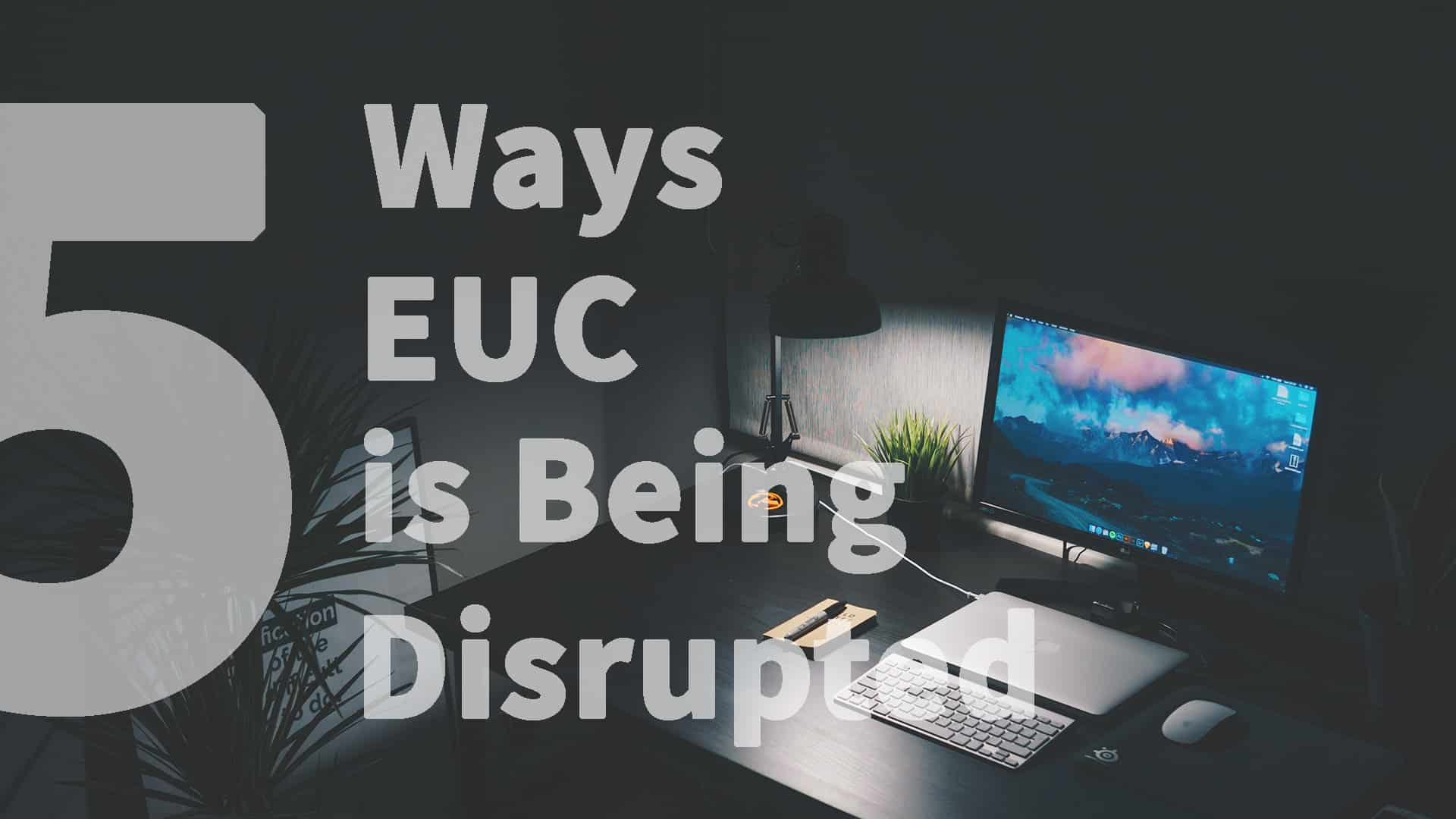The future of end user computing is likely to change thanks to these innovations.
Thanks to modern innovations in end user computing, more endpoint devices are being connected each and every year. Billions of endpoints are expected to be added as the the internet of things explodes. With so many devices being added, enterprises will need a solution powerful enough to standardize, secure, and manage them.
Many are pointing to the fact that disruption will occur overtime. But this disruption is already taking place. Spurred by IoT innovation and a need for a powerful and flexible solution, innovation has arrived for enterprises, small and medium sized businesses and beyond.
This is thanks to the revolutions brought on by: Cloud desktops, IoT, remote work, BYOD, and new low cost high powered endpoints.
Cloud Desktops and End User Computing
Desktop as a Service, now often referred to as Cloud Desktops, is changing the landscape of end user computing.
According to a recent study done by Technavio, the DaaS market will grow by over 40% by 2020. What is the cause of this explosive growth? The answer might just lie in the evolution of the Cloud. In fact, some even argue that in 2019, DaaS should more appropriately be renamed “Cloud Desktops”. This is because of the major role the Cloud has played in reshaping the DaaS offering.
Thanks to the Cloud, DaaS is now more flexible and provides more savings benefits than ever.
Internet of Things (IoT)
The Internet of Things (IoT) is here to stay. And with the number of devices connected to the internet expected to reach the billions, it’s going to cause a big wave. As companies and organizations begin to feel this wave, they will look for a smart way to secure and manage devices. They will also face many challenges. One of the most significant challenges they face include managing different devices spread out across many locations. It’s enough to wonder if secure IoT endpoint management is even possible.
But it is. In his recent article, Stratodesk CEO, Emanuel Pirker, explains that thanks to advancements in IoT management, we can expect to see more IoT devices in the workplaces of the future.
“Imagine a world where everything is connected” says Pirker, “Hospital staff, remote workers and employees simply walk into a room. Lights switch on, computers boot up, and are automatically logged into with all the apps and data workers need. This is already possible, thanks to NoTouch IoT”.
Enabling Remote Work
It’s no longer enough to deliver virtual desktops to workers in the office. Now more than ever, employees expect to perform integral work tasks at home as well as in the office. They may also require access to their virtual desktops on the go, at coffee shops, or as they travel to different business sites.
Unlike in the past, remote work is no longer the exception to the rule or something reserved for cutting edge startups. Instead, it has become the norm.
End user computing is being transformed by this modernization of the workforce. It is creating the demand for more advanced solutions capable of powering the widest array of devices. Although organizations are willing to compromise on workforce flexibility, they absolutely cannot compromise on security.
Bring Your Own Device (BYOD)
Bring-your-own-device refers to the growing trend of employees bringing their personal devices into the workplace. This extends not only to smart phones but also encompasses the breadth of IT consumerization becoming a workplace mainstay via tablets, USB drives, laptops and beyond.
Though BYOD may present potential benefits for both employers and employees, BYOD also creates significant obstacles for IT. Without the proper systems in place, it can even pose a threat to the security of your corporate network.
How can you ensure security over your endpoints and for your network while delivering virtual apps and desktops when your workers are eagerly bringing their own personal technology into the workplace?
One innovative way that Stratodesk is enabling employees to do this is via live boot. With live boot on NoTouch OS, employees can access their full virtual desktop securely without harming their underlying operating system.
The Raspberry Pi Revolution
Previously thought in possible, the Raspberry Pi has become a real disrupter in end user computing. This is thanks in part to the Raspberry Pi’s advanced capabilities coupled with its incredibly low cost point. Fully assembled and ready out of the box Raspberry Pi Thin Clients like the Citrix Ready workspace hub can be purchased for a mere fraction of the cost of Desktop PCs or Thin Clients.
The industry shifting release of the Raspberry Pi 4 further disrupts EUC by delivering a computer capable of enabling desktop-like user experience with built in dual view capabilities natively.
With so many powerful innovations already happening, it’s safe to say that end user computing has been disrupted. Stratodesk software stands directly at the helm of this innovation. This is thanks to our powerfully engineered operating system and endpoint management system. Together, they enable the convergence of VDI and IoT technologies, and shape the future of end user computing.

